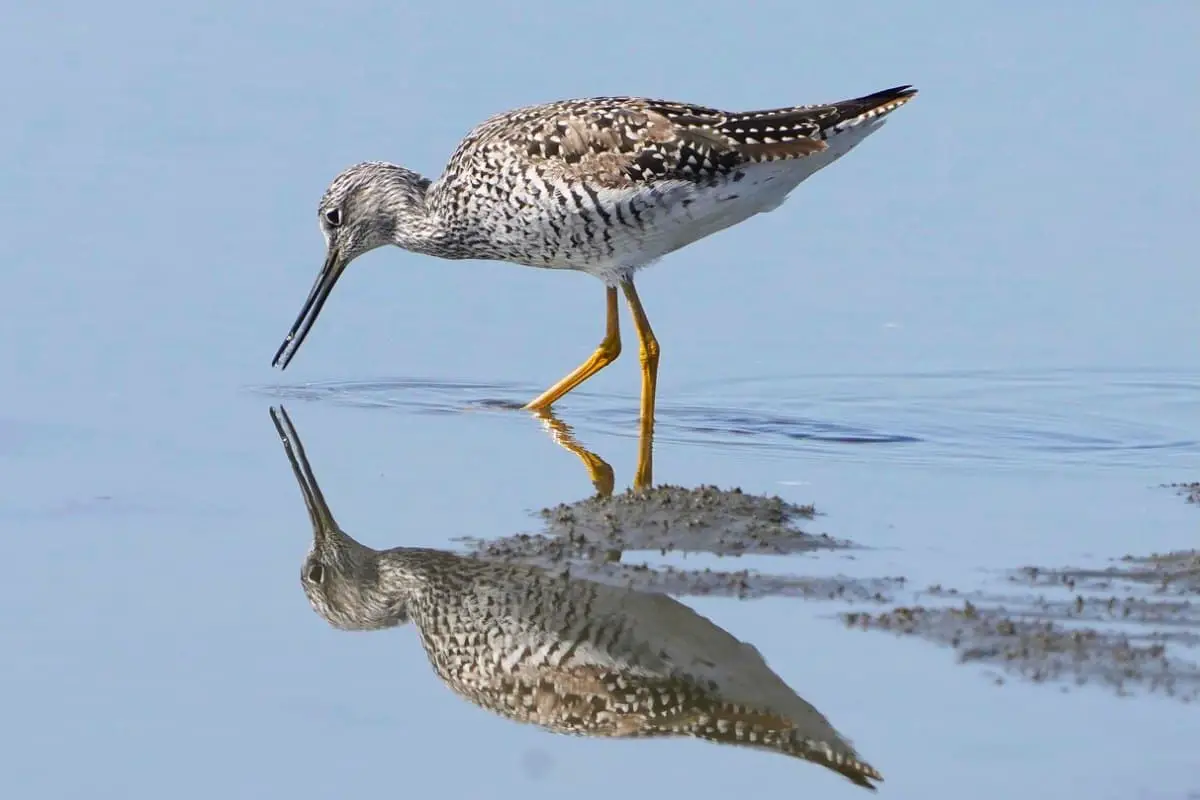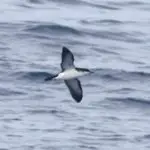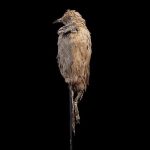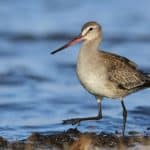Common Name: Greater Yellowlegs
Scientific Name: (Tringa melanoleuca)| Size | Diet | Range in Hawaii | Status in Hawaii |
|---|---|---|---|
| 14 in. - 16 in. | small fish, crustaceans, mollusks, and insects | O'ahu, Kaua'i, Moloka'i, Maui, and Big Island | Least Concern |
The Greater Yellowlegs, also known as Tringa melanoleuca, is a medium-sized shorebird species that is native to North and South America. While the species is not native to Hawaii, it has been known to occasionally visit the islands as a non-breeding visitor and vagrant. With its unique appearance and distinctive behavior, the Greater Yellowlegs is a fascinating bird species that has captured the attention of birdwatchers and avian enthusiasts around the world.
In this article, we will explore the world of the Greater Yellowlegs, its unique characteristics, and its occasional presence in Hawaii.
Greater Yellowlegs
Appearance
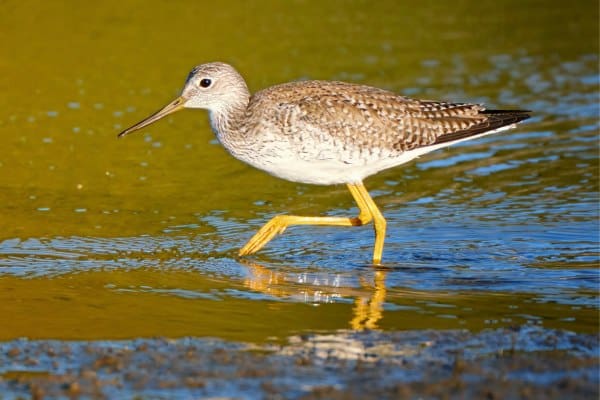
The Greater Yellowlegs is a striking shorebird known for its distinctive appearance. Standing tall at approximately 14 to 16 inches (36 to 41 centimeters), it possesses an elegant and slender build.
What truly sets the Greater Yellowlegs apart is its striking plumage. During the breeding season, these birds sport a rich and mottled brownish-gray back, along with a white belly adorned with dark spots and streaks.
Their long, slender legs are bright yellow, providing a vivid contrast to their plumage. Their slender, slightly upturned bill is also a key feature, which they use adeptly for hunting in shallow waters. In flight, their white rump and tail feathers become apparent, adding to their overall beauty.
Diet
The Greater Yellowlegs are consummate hunters with a diverse and delectable diet. These striking shorebirds primarily feast on aquatic delicacies found in their wetland habitats. Their menu includes a variety of aquatic invertebrates such as small fish, crustaceans, mollusks, and insects.
Nesting
During the breeding season, which typically occurs in northern regions of North America, Greater Yellowlegs choose nesting sites in wetlands. They create shallow scrapes on the ground, often lining them with grass, leaves, and other vegetation to form a rudimentary nest.
What’s remarkable is their parenting partnership. Both male and female Greater Yellowlegs share the responsibilities of incubating the eggs and protecting the nest. This cooperative effort ensures the safety and survival of their offspring.
Their nesting strategy aligns with their habitat preferences, as these wetland areas provide ample food sources for both the adults and their soon-to-hatch chicks.
Behavior
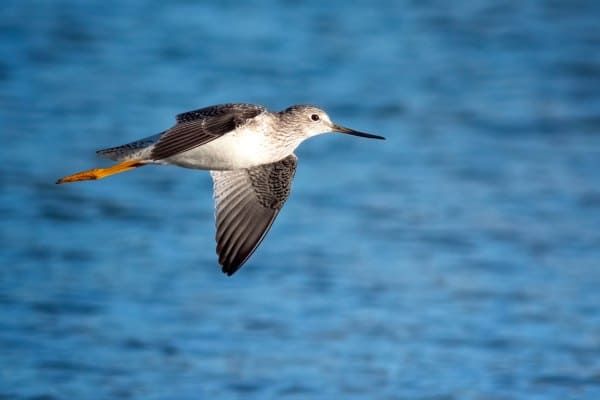
What sets the Greater Yellowlegs apart is its boundless energy and enthusiasm for hunting. Their keen eyes and sharp bills make quick work of capturing their prey, often with lightning-fast strikes that leave onlookers in awe.
But it’s not just their hunting prowess that makes them fascinating. Outside the breeding season, they form large flocks at high-tide roost sites, providing safety from predators and sharing information about food sources. Their calls, resembling clear, melodious whistles, echo through the wetlands, creating a symphony of sound that’s both enchanting and unmistakable.
These birds are also migratory wonders, embarking on incredible journeys between their breeding grounds in the northern reaches of North America and their wintering habitats in the southern United States, Central and South America. Their long-distance migrations are feats of endurance and navigation, relying on celestial cues and Earth’s magnetic field.
Habitat
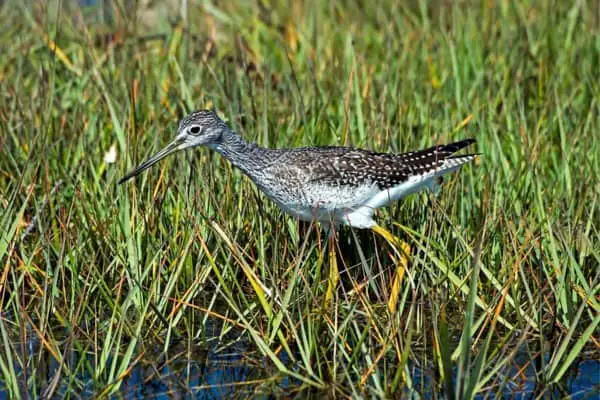
The Greater Yellowlegs is a fascinating bird that thrives in wetland habitats. Whether in freshwater marshes, coastal shorelines, or temporary stopovers, these waders showcase their adaptability and hunting prowess. Their striking appearance and skilled foraging make them a captivating presence in diverse wetland environments.
Range
The Greater Yellowlegs is a captivating but rare visitor to the Hawaiian Islands. These distinctive shorebirds breed in northern regions of North America and typically spend their winters in the southern United States, Central America, and South America.
While their primary range doesn’t include Hawaii, there have been sporadic sightings of Greater Yellowlegs in the state. These sightings have occurred on various Hawaiian islands, including O’ahu, Kaua’i, Moloka’i, Maui, and Hawai’i.
Conservation Status
The Greater Yellowlegs (Tringa melanoleuca) were considered a species of “Least Concern” according to the International Union for Conservation of Nature (IUCN). This classification indicated that their populations were relatively stable, and they weren’t facing imminent threats.
Interesting Facts
1. Camouflage Artists
Despite their striking appearance, Greater Yellowlegs are experts at blending into their wetland habitats. Their mottled brown and white plumage provides excellent camouflage among reeds and marsh grasses, helping them remain hidden from predators and prey alike.
2. Distinctive Flight Calls
During migration, Greater Yellowlegs are known for their distinctive flight calls, which sound like a clear and melodious “tu-tu-tu” or “tu-tu-lee.” Birdwatchers often use these calls to identify their presence even before seeing them.
3. Mimicking Other Birds
Greater Yellowlegs are known for their ability to mimic the calls of other bird species. This behavior can be both a form of territorial defense and an attempt to attract potential mates.
4. Winter Plumage
During their winter stay in warmer regions, Greater Yellowlegs often lose some of their vibrant yellow leg coloration. This change in plumage helps them conserve heat in colder climates and makes them more inconspicuous in their winter habitats.
5. Taxonomic Connection
Greater Yellowlegs are part of the sandpiper family Scolopacidae, which includes various other wading birds like Willets, Snipes, and Dowitchers. They share certain characteristics and behaviors with these related species.
Frequently Asked Questions
1. Why are their long legs so important?
Their long legs are crucial for wading in deep water and mud while foraging for prey. This anatomical adaptation allows them to reach food in places that are inaccessible to many other birds.
2. Are there any subspecies of Greater Yellowlegs?
Yes, there are two recognized subspecies of Greater Yellowlegs: the North American Greater Yellowlegs (Tringa melanoleuca melanoleuca) and the Eurasian Greater Yellowlegs (Tringa melanoleuca melanoleucos). They have slightly different ranges and can be distinguished by subtle differences in plumage.
3. What is the typical lifespan of a Greater Yellowlegs?
In the wild, their lifespan is estimated to be around 5 to 10 years. However, their survival depends on various factors, including food availability, predation, and environmental conditions.
4. Can Greater Yellowlegs’ plumage change with age?
Yes, their plumage can change with age. Juvenile Greater Yellowlegs often have paler plumage and may lack the distinct markings of adults. As they mature, their plumage becomes more defined and acquires the characteristic mottled brown and white pattern.
5. Can Greater Yellowlegs be kept as pets?
No, it is illegal and unethical to keep Greater Yellowlegs or any wild bird as a pet. They are protected by wildlife conservation laws, and keeping them in captivity is harmful to their well-being and against the law.
